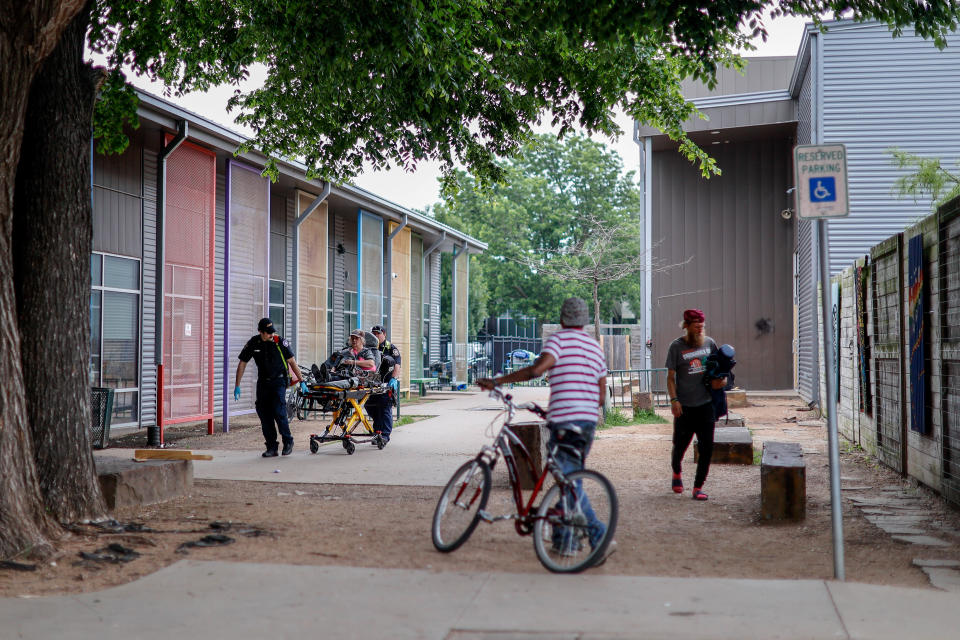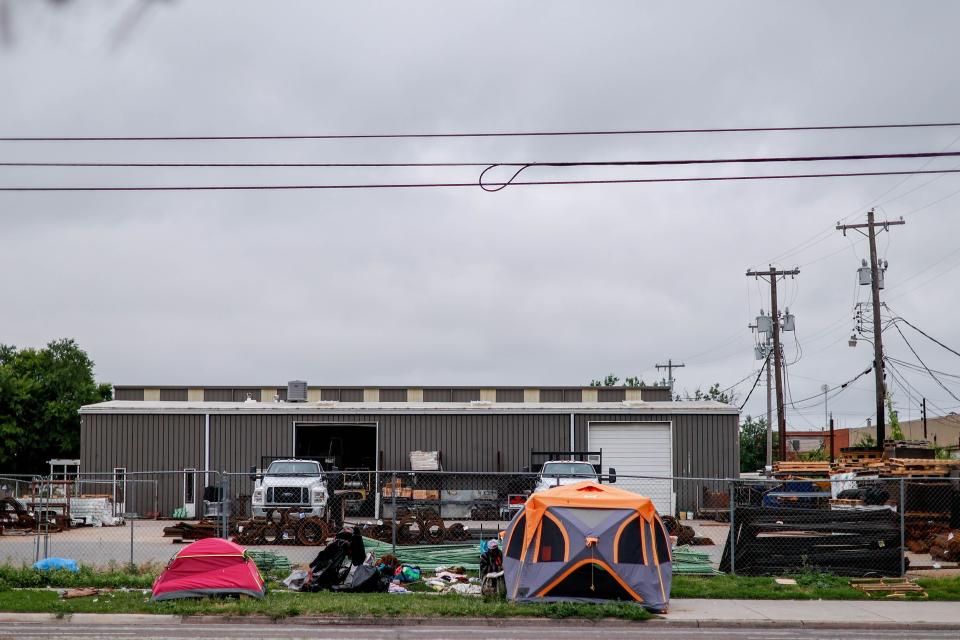The number of people experiencing homelessness in Oklahoma City has grown by 28% this year in comparison to last year, according to the annual Point in Time survey.
At least 1,838 people in Oklahoma City had no place to call their home on Jan. 25 this year, when volunteers conducted a “snapshot” survey of the city’s homeless population in compliance with federal grant funding requirements. Data gathered for the Point in Time report showed an increase of 402 homeless people from the 1,436 counted for the same survey in 2023.
The report, published by the city Friday, emphasized that the Point in Time Count “should not be considered an exact and exhaustive number” and that “its findings are one perspective on the state of homelessness in the city on only one day.” But demographics and patterns reflected in the data provide a useful analysis of the issue around which the city and its partners can focus resources and services, according to the report.
Of those surveyed for the count, the report shows:
-
62% were staying in a shelter, 24% were unsheltered, 13% in transitional housing and 1% in safe havens.
-
62% were male, 36% were female and 2% were transgender or another gender identity.
-
45% were white, 35% were Black and 9% were Indigenous.
-
Just under 25% are considered “chronically” homeless, a 17% increase from last year.
-
20% of the homeless population reports having mental illness.
-
17% were families with at least one child. The overall number of homeless families increased by about 14% in comparison to last year, but none were found to be sleeping outside.
-
9% were unaccompanied youth age 24 or younger, but according to the report, none were unsheltered.
-
7% of the homeless population are also veterans.
Why has there been an increase in homelessness in Oklahoma City?
The report attributes the increase in homelessness to several likely factors, including the ending of pandemic-era rental aid, a lack of affordable housing and ongoing issues with inflation and adequate wages.
“In general, the longer a person remains unhoused, the higher the level of intervention that will be needed to end their homelessness,” the report reads. “This causes a bottleneck in the system, because the number of people staying longer and needing more support grows, making it difficult for others to move through the system efficiently. Data shows the homeless response system needs more housing so people can exit into housing more quickly.”

Related: Oklahoma City initiative gaining ground as dozens of homeless housed, camps cleared
Despite the increase in the total number of homeless people this January, the total percentage of the city’s unsheltered population experiencing “chronic” homelessness actually fell to 48%, down 14% from the previous year.
The percentage of homeless people sleeping outside long-term in Oklahoma City had been steadily growing, peaking at 60% in 2023. But a different approach to addressing the issues began that year with Key to Home, a public-private partnership of dozens of agencies working with the city and the private sector toward drastically reducing unsheltered homelessness.
Among the partnership’s goals by the end of 2025 are rehousing 500 chronically homeless and unsheltered people and diverting 100 youths from experiencing homelessness. Since Key to Home officially launched its action plan, at least 153 people living outdoors have been placed in homes through the partnership’s encampment rehousing initiative.
Jamie Caves, the strategy implementation manager for the Key to Home Partnership, believes the rehousing initiative is starting to show its impact, but that there is still a long way to go toward achieving its goal.
“We expect to see continued reductions in the number of residents sleeping outside,” Caves said in a news release Friday. “But to sustain this trajectory, we will need to scale investments that help people exit homelessness quickly or prevent them from entering in the first place.”

Organizations working to help those in OKC experiencing homelessness
The nonprofit Homeless Alliance, dedicated to coordinating and bettering resources for Oklahoma City’s homeless community, has partnered with the city on the annual Point in Time survey for many years. The organization also operates the Westtown Homeless Resource Campus, which includes a Resource Center, a housing complex and a shelter that sees about 300 people daily.
Meghan Mueller, CEO of the Homeless Alliance, took over the leadership role of the nonprofit after longtime executive Dan Straughan retired earlier this year. She said that, with eviction rates worsening in Oklahoma City, the higher number of people showing up at the Homeless Alliance’s facilities wasn’t surprising.
“We also know that we can meet those needs in a much more cost-effective and less traumatizing way by helping people remain in housing or with family or friends as they resolve their crisis,” Mueller said.

Ward 5 City Councilman Matt Hinkle, elected to represent part of the city’s south side a year ago, said he has been “cautiously optimistic” about the city’s various programs and initiatives. He is excited, however, to see encampments across the city being cleaned up and that more and more people are accepting Key to Home services.
“This is all really new, but I like what I’ve seen so far, and I’ve been a fan of the conversations with some of things we’re doing,” Hinkle said. “It’s a step in the right direction, and all of the conversations are promising.”
Experts have linked youth homelessness with increased child welfare involvement and school failure. In many ways, “how we fix the world is fixing the kids really, really early,” Hinkle believes.
“We’re in that giant, ugly circle that is really hard to stop when things go south,” Hinkle said. “If your mom’s on drugs and your dad’s in jail and nobody else in the family wants you, then all of a sudden these kids are wondering where the hell they’re going to eat as opposed to what the square root of a triangle is. It starts there, and it cycles up to be really tragic.”
“Just look on the streets. There’s so many people on the streets now, and if you interact with them, you can look in their eyes and they’re just dead,” Hinkle continued. “They don’t have any hope. So maybe that’s what it is. We just want to give them hope.”
This article originally appeared on Oklahoman: OKC’s homelessness count shows dramatic increase, but progress made
Signup bonus from





